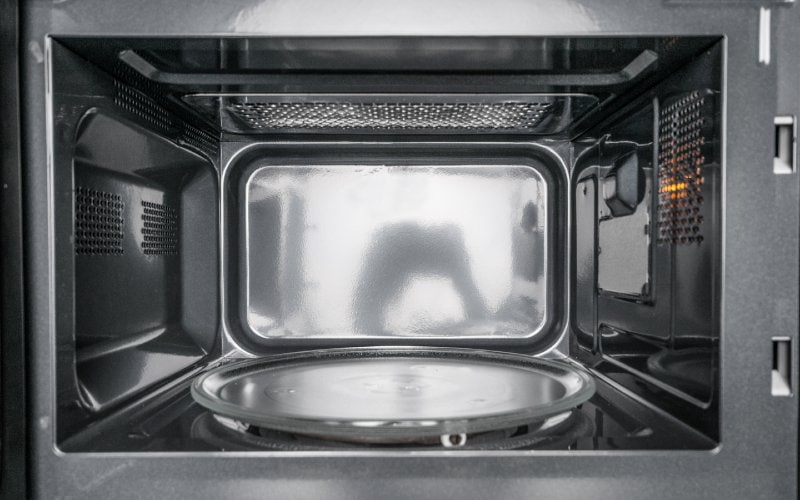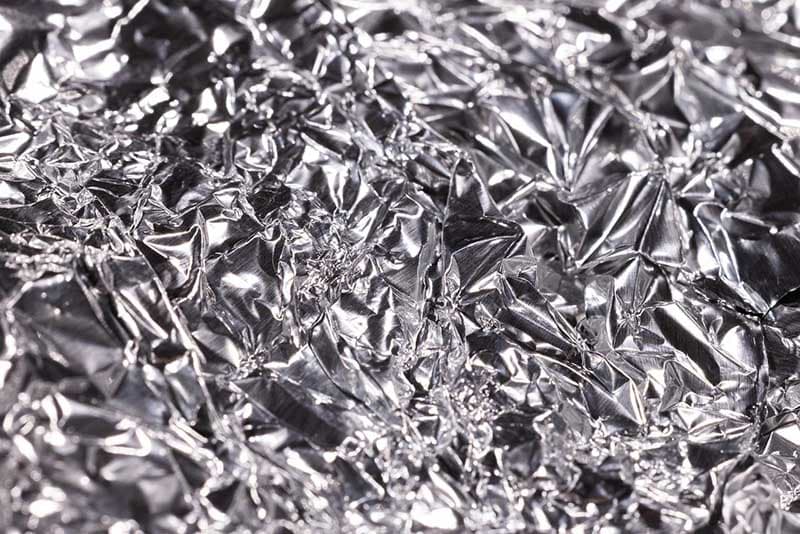Can You Put Aluminum Foil In The Microwave? (Microwaving Safety Tips)
-
Jana Blagojevic
- Last updated:
If you have ever wondered about that old and unexplained rule your parents had for never putting aluminum items inside the microwave, we are here to help you understand the reasons behind it. A microwave is a fascinating appliance that heats your food quickly by emitting a range of radio waves at specific frequencies. These waves reach the molecules inside your food or beverage and cause them to jump around and heat up. While these waves can get to water, fats, and sugar, they cannot reach ceramics, glass, or plastic. This way, your food is safely heated while allowing you to freely touch your ceramic bowl without getting burned.
Aluminum foil is a type of metal sheet that, when placed in a microwave, can cause a mysterious reaction resembling electricity. The current runs through the aluminum foil, causing sparks and high heat. That is why microwaving aluminum foil is never a bright idea, although there are some exceptions you can read about further in this article.
The Principle of The Microwave
The biggest difference between microwaves and other appliances is the heating source, which doesn’t come from gas or electrical heating systems. The microwaves have a magnetron tube that produces waves that reflect off the walls and penetrate the food. These waves wiggle at a certain frequency, causing the water molecules inside the food to bounce and produce heat.
Microwaves work best with foods that have a shorter diameter. Therefore, they are most effective at heating food up to 1 to 1.5 inches deep, and larger portions are best split in half or into smaller pieces.

What is Aluminum
Aluminum is a type of metal that is lightweight yet very strong and has various uses in the kitchen and other industries. Around the kitchen, you can commonly find aluminum in a few forms.
- Utensils
- Loaf tins
- Tin cans
- Aluminum foil
- Pie plates
- Decorative plates
Aluminum is primarily famous for its foil form to store food and other goods. While most people know aluminum from everyday kitchen items, it also has an essential use in electronics, building materials, factory food and drink packaging, medications, vehicles, and many others. If you store leftovers frequently, you probably use aluminum foil daily.
What Would Happen to Aluminum Foil In The Microwave
Since waves inside a microwave have a particular frequency of around 2.45 gigahertz, they have the unique properties of being absorbed by water, sugars, and fats. These waves are converted into heat once absorbed, and while these materials can absorb them, glass, plastic, and ceramic cannot. This is why you most commonly use a container made of these three materials when using the microwave; the food inside will become hot while the container will remain at its previous temperature.
While this is the case for most materials, metal, especially thick ones, works like a mirror inside the microwave. This is why you would never use a metal pan to heat your food because the surface will only reflect the waves, never allowing them to reach your food and heat it.
The aluminum foil acts differently than thick metals inside a microwave, especially aluminum foil crinkled into a loose ball. When you place a crinkled aluminum foil inside a microwave, the foil will instantly begin to emit a blue glow and even ignite. This occurs because aluminum conducts electricity. The aluminum foil will create a current when you turn on the microwave. This electricity on the aluminum surface will begin jumping around and creating a spark due to the many ripples on the foil surface. This can become incredibly dangerous if other flammable objects are inside the microwave.
While our parents taught us never to put aluminum foil inside the microwave, for these very reasons, there are a few exceptions to that and ways to microwave aluminum safely.
Safety Tips for Putting Aluminum Foil in the Microwave
The first thing you should always do before heating food with aluminum foil in the microwave is check the food’s label. If the labels say that the food packaging is microwave-safe, you can heat it without the risk of igniting it. This can be useful for some types of packaging, such as a microwave pizza, where the aluminum foil is spread on the base, creating a crispy crust when microwaved.
Since the microwave walls are also metal, always distance the aluminum foil at least 2 inches away from the walls, the top, and the doors. Also, never use aluminum foil for longer than 30 seconds so you avoid causing any damage to your oven’s components.
Only cover part of the surface of the food you want to cook. You can cover only about ¼ of the food to allow microwaves to reach and heat your food.
Regardless of the safety label, stop if you notice any sparks. Once you turn on the microwave, if there are any issues, you will notice tiny sparks right away, and at that point, it is best to turn the microwave off and remove the aluminum foil.

Final Thoughts
After reading and learning more about the fantastic reaction of microwaving aluminum foil, you can better understand the safety measures you need to take to avoid creating sparks. While this may seem like a fun experiment, it is crucial to understand that aluminum foil can cause serious damage to your microwave during this process and can be dangerous when used improperly. Before microwaving your food, always check if the label says it’s microwave-safe.
- Can Aluminum Foil Go In The Microwave? Healthy Cooking 2023
- Can You Microwave Aluminum Foil? (Yes, But Must Know This)
- Can You Microwave Aluminum Foil? The Answer Might Surprise You!
- What if I Put Aluminum Foil in the Microwave? | HowStuffWorks
- Can You Put Aluminum Foil in the Microwave?
- Can You Put Aluminum Foil In The Microwave? – Kitchen Habit
Featured Image Credit: Pixel-Shot, Shutterstock
Contents
